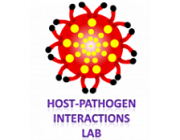Citation:
Meirav Matto, Sklan, Ella H, David, Naama , Melamed-Book, Naomi , Casanova, James E, Glenn, Jeffrey S, and Aroeti, Benjamin . 2011.
“Role For Adp Ribosylation Factor 1 In The Regulation Of Hepatitis C Virus Replication”. J Virol, 85, 2, Pp. 946-56. doi:10.1128/JVI.00753-10.
Publisher's VersionAbstract:
We hypothesized that ADP-ribosylation factor 1 (Arf1) plays an important role in the biogenesis and maintenance of infectious hepatitis C virus (HCV). Huh7.5 cells, in which HCV replicates and produces infectious viral particles, were exposed to brefeldin A or golgicide A, pharmacological inhibitors of Arf1 activation. Treatment with these agents caused a reduction in viral RNA levels, the accumulation of infectious particles within the cells, and a reduction in the levels of these particles in the extracellular medium. Fluorescence analyses showed that the viral nonstructural (NS) proteins NS5A and NS3, but not the viral structural protein core, shifted their localization from speckle-like structures in untreated cells to the rims of lipid droplets (LDs) in treated cells. Using pulldown assays, we showed that ectopic overexpression of NS5A in Huh7 cells reduces the levels of GTP-Arf1. Downregulation of Arf1 expression by small interfering RNA (siRNA) decreased both the levels of HCV RNA and the production of infectious viral particles and altered the localization of NS5A to the peripheries of LDs. Together, our data provide novel insights into the role of Arf1 in the regulation of viral RNA replication and the production of infectious HCV.
